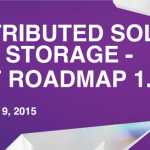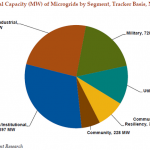Microgrid Benefits
From ARUP’s 5 Minute Guide to Microgrids
- Conversion loss savings
- Lower carbon cost
- Reduced peak power costs
- Reduced capacity charges
- Increased CHP balance
- Network capex avoidance
- Lower network redundancy
- Energy price arbitrage
- Optimised own supply use
- Negawatt market
- Operational reserve market
- Reduced fossil fuel use
- Auxiliary market services
- Choose lowest cost energy
- Power factor services
- Consistent secure power
- Protection of critical loads
- Secure non-essential supply
- Controlled power quality
- Reduced blackout risk
- Increased supply reliability
- Reduced CO2 intensity
- Continued productivity
- CSR and education benefits
- Consumer engagement
- Employee engagement
- Supply independence
- Reduced outage impact
- Optimised existing system
- Remote site availability
- Absorption chiller level load
- Visibility of energy use
Built much closer to end-users, if not on-site, and equipped with combined heat and power (CHP) technology, microgrids are typically more efficient than centralized power generation and distribution systems. Often making use of renewable energy resources, they’re also emissions-free, or at least significantly less polluting, than traditional fossil fuel-fired power generation.
More frequent and longer lasting power outages due to more frequent and extreme weather events and aging power infrastructure are also fueling interest and investment in microgrid technology and deployments. Boosting infrastructure spending, in turn, means more jobs and rising personal income.
Furthermore, growth in residential solar PV installations has driven growth and the emergence of power ¨prosumers.¨ That, in turn, is resulting in growing public interest in, and calls on government leaders, to institute industry and market reforms that support power production at the homeowner scale, such as net metering.
Adding to these benefits is microgrids’ flexibility in terms of use. This extends across: primary or quick-start back-up generation, emergency recovery, load shifting, peak shaving and ancillary grid services, such as frequency and voltage regulation.
Though small, highly fragmented and posing numerous challenges to developers, the North American microgrid market is growing fast, Navigant highlights in its ¨Multi-client Microgrid Study.¨
At present, campus/institutional microgrids account for the largest segment of the market. Growth is expected to accelerate in the utility microgrid segment as states continue to enact policy and regulatory reforms in order to meet power infrastructure needs.
Similarly, community microgrids are also growing rapidly in order to enhance grid resiliency in the face of climate change, as well as realize associated social and environmental advantages and benefits.
The microgrid benefits everyone by creating cleaner, more resilient communities. The bulk power system can also benefit from microgrid flexibility.





